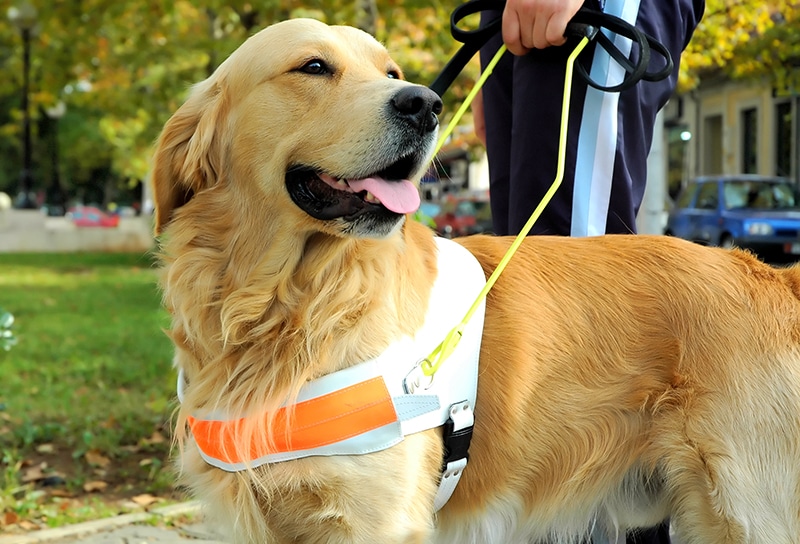TevraPet
April 25th is International Guide Dog Day
April 25 is International Guide Dog Day! As a guide dog handler, these dogs hold a very special place in my life. However, guide dogs hold a special place in the history of all dogs everywhere, and that’s why we really should all celebrate them! Guide dogs paved the way for all other service animals in the United States and around the world.
The first guide dog schools were founded in Germany, shortly after World War I. The idea at the time was to train dogs to enhance the lives of veterans blinded during that conflict. In 1927, Dorothy Harrison Eustace, an American breeder of German Shepherds, heard about these specially trained dogs while living in Switzerland. She wrote a landmark article about one particular training center located in Potsdam, Germany. The article got published in The Saturday Evening Post, and shortly afterward caught the attention of Morris Frank, a blind American. Frank contacted Dorothy Harrison Eustace and persuaded her to train a dog for him. Eventually, in 1929, Morris Frank got his wish. He traveled to Switzerland and learned how to work with a female German Shepherd called Buddy.
Morris Frank, Dorothy Harrison Eustace, and Buddy returned to the United States. They embarked on a publicity campaign in order to show Americans the abilities of guide dogs and convince people that they , along with their handlers, should have access to restaurants, hotels, public transportation, and any other areas open to the general public. Later that year, Frank and Eustace co-founded the first guide dog training program in the United States. They called it The Seeing Eye, and it still exists today. There are actually about 20 guide dog schools currently in the United States, and many other programs around the world.
Today, there are over 10,000 active guide dog teams in the United States alone. The most common dog breed trained for this work is the Labrador Retriever, but Golden Retrievers and German Shepherds are also used. Specifically, guide dogs are trained to navigate around obstacles, guide their handlers in a straight line across busy streets, and alert them to changes in elevation, like curbs or flights of stairs. They also learn a skill called intelligent disobedience, which means they can refuse to proceed if their handler is in danger. The most common example of this is when a dog will refuse to cross a street if a vehicle is too close to the handler. They guide their blind handlers in environments ranging from busy cities, to airports, to pleasure hikes in the park. Many guide dog handlers feel more confident traveling independently. Speaking from personal experience, getting from point A to point B is far more graceful with a dog at my side. It is difficult to describe the sheer joy I feel working with a confident, well-trained partner.
Guide dogs have inspired scientists, dog trainers, and animal lovers around the world to explore the possibilities of the human/canine bond. Now, dogs can be taught to assist people who are deaf, people with mobility impairments, and people with psychiatric disabilities. Thanks to the pioneering work of early guide dog handlers and trainers, service animals can accompany their handlers anywhere open to the general public. So, let’s take a moment to celebrate the wonderful work guide dogs do for their people, as well as their contribution to the service dog movement as a whole! I know that my dog, Diamond, will get some extra love today!
By: Shanna Stichler
Nellie, the Future Leader Dog
Tevra Brands has it’s own Leader Dog in training, Nellie. Nellie just turned 5 months old and is being raised by puppy raisers in the Tevra Brands family. This holiday is near and dear to our heart here at Tevra Brands.

